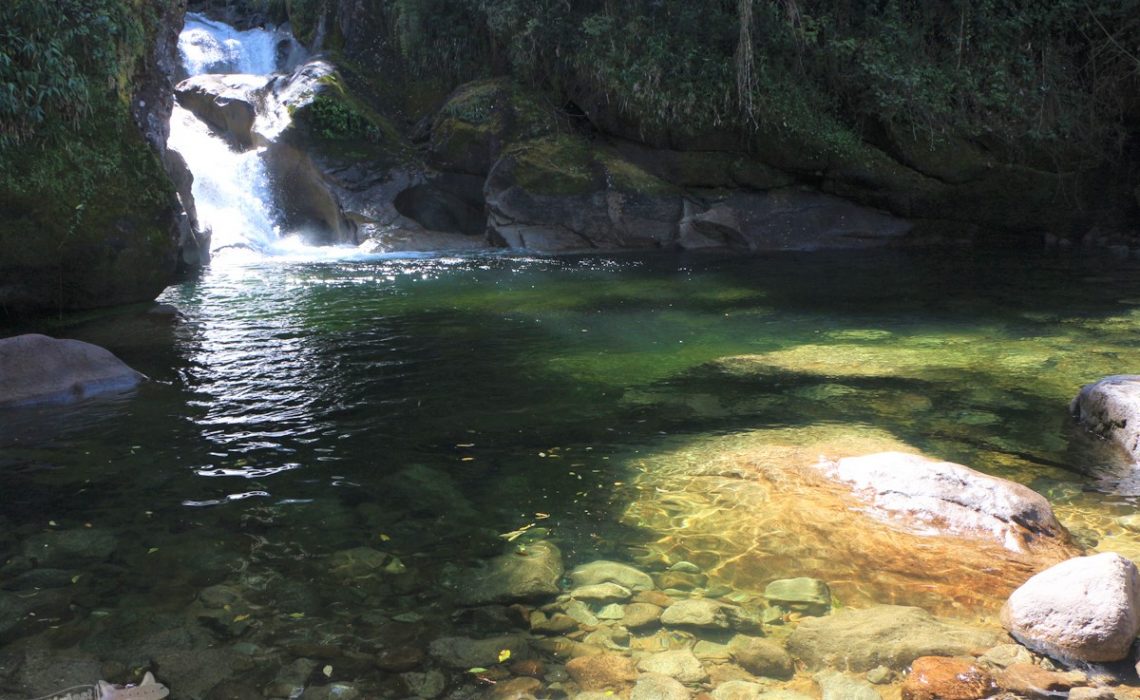
You might also like:
RIO DE JANEIRO, BRAZIL – Covering the Southern Rio State and also part of Minas Gerais, the National Park of Itatiaia, the first to be founded in Brazil, is an important landmark for the country’s ecotourism. For its impressive biodiversity and countless trails and waterfalls, Itatiaia’s Park is a destination not to be missed, especially for nature loving visitors.
Situated in the Mantiqueira’s Mountain Range, not far from São Paulo State, the National Park of Itatiaia was founded in 1937. Famous for its rock formations, the park’s 300,000 square meters are spread across four cities: Itatiaia and Resende, in the Southern Rio State; and Itamonte and Bocaina de Minas, in Southern Minas Gerais State.
Having earned Excellence Certificate by travel company TripAdvisor since 2014, the National Park is divided into two main areas: the low part (or the lowland), where the park’s administration is located; and the high part (the upland), where visitors can access the striking views.
One of the favorite attractions from the lowland area is Mirante do Último Adeus (Last Good Bye’s look out point), where people can have a privileged panoramic view of the Mar’s Mountain Range and the Campo Belo River’s Valley.
Close to the Visitors’ Information Center, still in the lowland, the Lago Azul lake is another natural attraction one must check out. Two trail options lead to Lago Azul: a shorter, but more difficult path; or the longer, but easier one. Despite the lake’s low temperature, visitors are allowed to swim in Lago Azul – which is, in fact, a natural pool formed by the Campo Belo river.
Those looking for more adventurous activities should take the trail to Três Picos, a look out point that offers a breathtaking view of the Paraíba river, the Mantiqueira’s and Mar’s Mountain Ranges. The steep trail to the point takes approximately 7 kilometers. Hikers must sign a Term of Responsibility in the Visitors’ Center before entering this trail.
To fully experience the most stunning waterfalls from the park’s lowland, make sure to visit Maromba’s Complex, situated 4 kilometers away from the Visitors’ Center. The complex gives access to Piscina Natural do Maromba, a natural pool located 1,100 meters above the sea level; and the Itaporani and Véu da Noiva waterfalls.

While the low part of Itatiaia Park offers great attractions, the park’s upland is where the most famous spots can be found. The most touristic – and certainly the most challenging – is Pico das Agulhas Negras, the highest peak of Rio de Janeiro State. From its 2,791 meter-high peak, visitors can appreciate an incredible view of the Paraíba Valley, the Maciço das Prateleiras’ massif and Minas’ highlands.
The trail to Agulhas Negras, however, requires hikers to be experienced and in excellent physical condition – no wonder it is frequently used by Rio’s military forces for training. It is a 45-minute walk to the base of Agulhas Negras, and it takes a further two hours of heavy climbing to get to the top of the peak.
Visiting the Prateleiras’ massif is also a nice option in Itatiaia’s highland area. Perfect for photos, the massif gathers the most beautiful panoramic views, especially of Paraíba’s Valley. Possessing various rock formations, Prateleiras is also the place to go for adventurous rock climbing.
The high area of the park still includes the Aiuruoca Valley, which can be reached by a moderate hike. There, one can find the stunning Aiuruoca waterfall and the “Ovos da Galinha” (Chicken Eggs) rock formation.
The overnight stay in Itatiaia park is only allowed in one of its shelters – Rebouças, Massena, Rancho Caído and Água Branca – as well as the camping areas located inside the shelters. For those who prefer more comfortable accommodation, the city of Itatiaia offers good lodges and pousadas.
To reach the high part of Itatiaia’s Park from Rio or São Paulo, one must take Presidente Dutra Highway (BR 116) until Engenheiro Passos. Then, one must take the Rio-Caxambu Road until “Garganta do Registro” and continue until Posto Marcão –3 kilometers away from the Rebouças shelter.
To reach the lowland part of the park, visitors must take Presidente Dutra Road (BR 116) until the city of Itatiaia (Kilometer 318).
Source: riotimesonline.com



